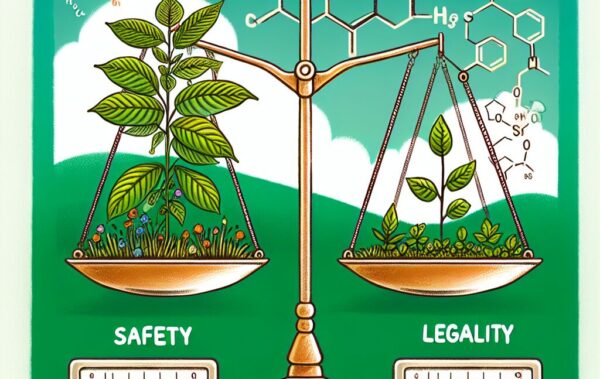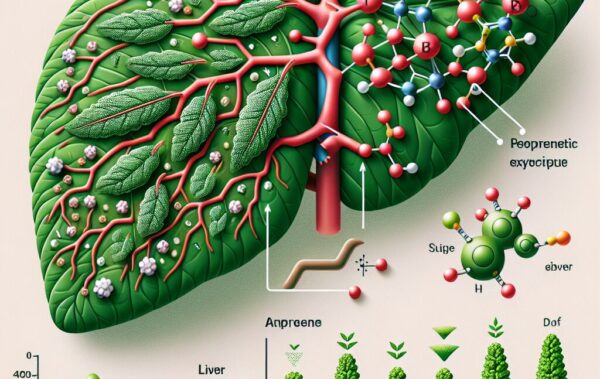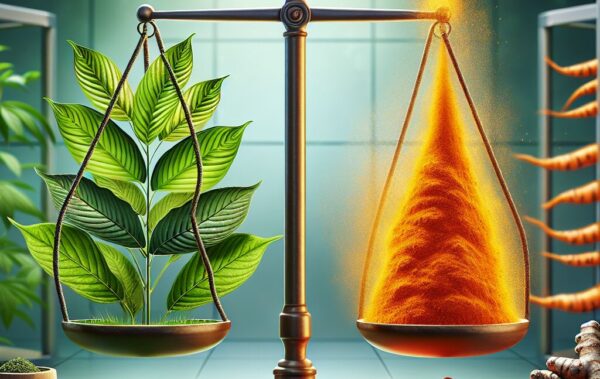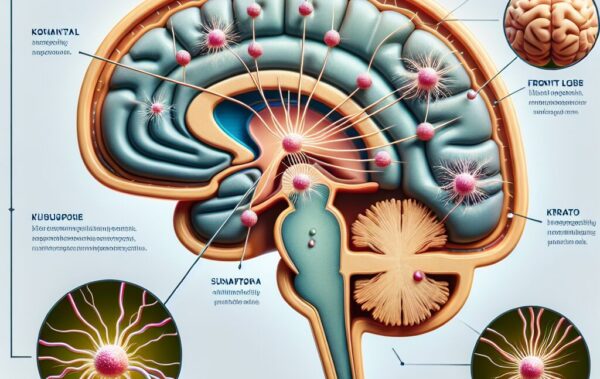- Overview of Kratom and Its Uses
- Chemical Composition of Kratom Leaves
- Extraction and Analysis of Sedative Compounds
- Pharmacological Effects of Kratom Sedatives
- Frequently Asked Questions about Kratom Compounds
Kratom, a tropical tree native to Southeast Asia, is garnering increasing attention for its potential sedative properties. With leaves that contain a complex array of compounds, it has been used for centuries by indigenous peoples for its psychoactive effects. Traditionally, kratom leaves were chewed by workers to combat fatigue and improve productivity, or brewed into teas for pain management and to alleviate opioid withdrawal symptoms.
In recent years, kratom has found a niche in Western markets, often marketed for its purported benefits in managing pain, depression, and anxiety, among other conditions. As its popularity grows, so do the varieties of kratom products available. Vendors now offer kratom powder, capsules, extracts, and even edibles. There’s a growing demand for diverse products, from tea bags for a soothing brew to kratom-infused seltzers for a refreshing twist.
Despite its widespread use, kratom’s legal status remains a gray area in many countries. Its sedative compounds, primarily mitragynine and 7-hydroxymitragynine, are the subject of ongoing research to understand their effects fully. Some attribute the calming effects of kratom to these compounds’ ability to bind to opioid receptors, but without the same level of respiratory depression typically associated with traditional opioids. However, due to inherent risks and a lack of comprehensive studies, several nations have either regulated or banned the substance outright.
Consumers seeking kratom should be aware that, despite its natural origins, the potency and purity of kratom products can vary widely. Quality is of paramount importance, as adulteration with other substances could pose significant health risks. This underscores the importance of purchasing from reputable sources that ensure their products are tested and verified for both safety and potency. Enthusiasts who appreciate the herb’s nuanced effects tend to be selective, often preferring specialized strains such as Maeng Da or Bali varieties, each with its unique profile of alkaloids.
The community of kratom users often share testimonials about the herb’s efficacy for various ailments, but it’s crucial to temper such anecdotes with rigorous scientific studies. As research continues to shed light on kratom’s sedative compounds, their potential therapeutic uses, and appropriate dosages, both users and regulatory bodies may find the clarity needed to guide safe and beneficial use of this botanical substance.
Chemical Composition of Kratom Leaves
Kratom leaves are remarkable for their unique chemical composition, comprising a multitude of alkaloids and other phytochemical compounds that contribute to the plant’s sedative and psychoactive effects. The main active compounds in kratom leaves are mitragynine and 7-hydroxymitragynine, both of which have been studied for their pharmacological activities. These alkaloids interact with opioid receptors in the brain, which accounts for the sedative effects that many users report.
Mitragynine is the most abundant alkaloid in kratom, representing approximately 66% of the total alkaloid content in the leaf. Its oxidation product, 7-hydroxymitragynine, is present in much smaller amounts but is considered to be significantly more potent. The alkaloid profile of kratom can vary between different strains and also depends on environmental factors such as soil composition and climate in the regions where it is grown. This diversity is reflected in the varying effects reported by users who may prefer different strain varieties for their personal needs.
Beyond these primary alkaloids, research has identified other compounds within the leaf that may contribute to its overall sedative impact. These include speciogynine, paynantheine, and several others, each playing a role in the complex interaction of kratom’s bioactive components. It is the synergistic activity of these compounds that is believed to result in kratom’s sedative, stimulant, and analgesic properties, although the exact mechanisms of action continue to be the subject of scientific inquiry.
Analyzing the full spectrum of kratom’s bioactive compounds involves advanced techniques such as high-performance liquid chromatography (HPLC), mass spectrometry (MS), and nuclear magnetic resonance (NMR) spectroscopy. Such analyses not only help in understanding the pharmacological potential of each compound but also assist in standardizing kratom products for consistent quality and potency. Given the increasing use of kratom for its sedative effects, ensuring product standardization through rigorous testing is essential to safeguard consumer health.
- Mitragynine – Most abundant alkaloid in kratom leaves.
- 7-hydroxymitragynine – A potent alkaloid found in smaller amounts, with significant sedative properties.
- Speciogynine – A muscle relaxant that may contribute to kratom’s calming effects.
- Paynantheine – An alkaloid that may have a role in the analgesic effects of kratom.
- Other phytochemicals – A variety of other compounds that could influence the plant’s overall sedative effects.
To navigate the array of kratom products with confidence, it’s important for consumers to look for vendors who commit to transparency regarding the sourcing and composition of their offerings. Selecting products such as kratom capsules or extracts from trusted sources with lab verification can provide reassurance about the sedative compounds they are ingesting. In a market where product strengths can vary, and the presence of adulterants is a concern, purchasing from reputable sources becomes all the more vital.
Extraction and Analysis of Sedative Compounds
The extraction of sedative compounds from kratom leaves requires a meticulous approach to ensure the isolation and preservation of the alkaloids responsible for its effects. The process begins with the collection of fresh or dried leaves, which are then subjected to extraction methods that may vary from simple steeping to more complex chemical processes.
Typically, an initial solvent such as ethanol, methanol, or water is used to separate the alkaloids from the plant material. This solvent is chosen based on its ability to dissolve the desired compounds effectively. Once the initial extraction is complete, further purification steps help remove impurities and isolate the specific alkaloids of interest, such as mitragynine and 7-hydroxymitragynine.
One common method used is acid-base extraction, which involves adjusting the pH of the kratom solution to convert the alkaloids into their free-base form or a salt form, making it easier to separate them from other substances. Each alkaloid may require a slightly different technique due to its unique chemical properties. Advanced chromatography techniques are also employed for further refinement and to quantify the alkaloid content with high precision.
Subsequent analysis of these compounds provides a comprehensive profile of the sedative constituents within kratom. Researchers utilize cutting-edge tools to perform this analysis, including:
– High-performance liquid chromatography (HPLC) for the separation and quantification of each component.
– Mass spectrometry (MS) for determining the molecular weight and structure.
– Nuclear magnetic resonance (NMR) spectroscopy for in-depth structural elucidation.
These analytical techniques not only help to identify the sedative alkaloids present but also measure their concentrations, which is crucial for producing consistent and reliable kratom products. This is particularly important for products like kratom liquid extracts or potent red vein kratom capsules, where consumers expect a certain level of effect from their kratom experience.
Here is a table containing some of the key information related to the sedative compounds found in kratom leaves:
| Compound | Sedative Effect |
|---|---|
| Mitragynine | Moderate to high, primarily at higher doses |
| 7-hydroxymitragynine | High potency, strong sedative effects at lower concentrations |
| Speciogynine | Potential contribution to muscle relaxation, aiding in sedation |
| Paynantheine | May enhance analgesic effects, contributing to sedation |
The data garnered through these analytical processes not only deepens the understanding of kratom’s sedative effects but also helps suppliers to standardize their products. This ensures that when customers select items such as kratom gummies, they can trust in the consistency and quality of the experience the product is intended to provide.
Furthermore, the study of the extraction and analysis of kratom’s sedative compounds is ongoing. As research evolves, it promises finer control over the resulting kratom extracts, powders, and other formulations, optimizing their therapeutic potential while minimizing undesired effects.
Pharmacological Effects of Kratom Sedatives
 Building upon the foundation of diverse alkaloids present in kratom leaves, the pharmacological effects of its sedative compounds are multifaceted and have garnered interest within both the scientific community and among consumers seeking alternative therapies. A key player in kratom’s sedative profile is the alkaloid 7-hydroxymitragynine. Although present in kratom leaves in smaller quantities than mitragynine, 7-hydroxymitragynine exhibits a higher affinity for the body’s opioid receptors, particularly the mu-opioid receptors, which are critically involved in pain modulation and sedation.
Building upon the foundation of diverse alkaloids present in kratom leaves, the pharmacological effects of its sedative compounds are multifaceted and have garnered interest within both the scientific community and among consumers seeking alternative therapies. A key player in kratom’s sedative profile is the alkaloid 7-hydroxymitragynine. Although present in kratom leaves in smaller quantities than mitragynine, 7-hydroxymitragynine exhibits a higher affinity for the body’s opioid receptors, particularly the mu-opioid receptors, which are critically involved in pain modulation and sedation.
The pharmacological actions of these sedative compounds are thought to mimic, to some extent, those of opioid drugs, yet with a notable difference in their safety profile. Unlike traditional opioids, which can induce significant respiratory depression—a leading cause of fatal overdose—the sedative alkaloids in kratom do not appear to have the same effect on the respiratory system at commonly used doses. This characteristic lends an appeal to kratom as a potential alternative for pain relief without some of the more dangerous side effects associated with opioid use.
For those who use kratom as a sedative or for its relaxing effects, the onset and duration of its action can vary based on the method of consumption, dosage, and individual metabolism. Products such as kratom tea bags may provide a more gradual release of effects, while kratom liquid extracts may offer a faster and more intense experience due to their concentrated form. For this reason, users are advised to start with lower doses and gradually increase as needed to find their optimal level of sedation and comfort.
Furthermore, kratom’s sedative effects are not solely due to its action on opioid receptors. Other neurotransmitter systems are likely involved as well, including serotonergic, adrenergic, and GABAergic pathways. Exploration of these interactions could lead to a more comprehensive understanding of how these compounds produce sedation, mood elevation, and analgesia, potentially unlocking new avenues for treatment of conditions such as insomnia, anxiety, and chronic pain where sedation is a beneficial adjunct.
Due to the complex nature of how these sedative compounds interact within the body, and due to variability between strains and individual responses, those interested in experimenting with kratom are encouraged to do so with caution. It is important to approach use with a mindset of moderation and respect for the powerful effects these natural compounds can induce. Selecting vetted and reliable products from a kratom marketplace, which rigorously tests and standardizes their offerings, can help ensure a safer and more predictable experience.
In summary, the pharmacological effects of kratom’s sedative compounds are an intricate tapestry of interactions that offer potential benefits for users seeking natural sedative alternatives. It is crucial that both the use and study of kratom continue with a commitment to safety, quality, and a thorough understanding of its effects on human health.
Frequently Asked Questions about Kratom Compounds
As kratom continues to garner both interest and scrutiny due to its sedative properties, many common questions arise regarding these compounds. Below is an informative FAQ section that aims to address some of the most frequently asked questions about kratom and its sedative components.
Frequently Asked Questions about Kratom Compounds
What are the primary sedative compounds in kratom leaves?
The primary compounds responsible for the sedative effects of kratom are the alkaloids mitragynine and 7-hydroxymitragynine. These substances interact with opioid receptors in the brain and can produce sedation, relief from pain, and a sense of calmness.
Can kratom compounds be considered safe to use as sedatives?
While kratom has been used traditionally for its sedative effects, its safety profile is still under investigation. It’s important to source kratom from reliable vendors and to be mindful of dosage to reduce the risk of adverse effects.
Is there a risk of addiction with kratom’s sedative compounds?
As with many substances that have an impact on the brain’s opioid receptors, there is a potential for developing dependence or addiction to kratom. Responsible use and awareness of one’s response to the substance are important to mitigate this risk.
How does the sedative effect of kratom compare to traditional sedatives?
Kratom’s sedative effects are reported by some users to be milder and less likely to cause respiratory depression compared to traditional sedatives. However, the effects can be variable, and it’s important to find a personal balance.
Are there different strains of kratom that have varying sedative effects?
Yes, different strains of kratom can vary in their alkaloid profiles and, as a result, in their sedative potency. Strains like Red Vein varieties are often chosen for their prominent sedative effects, which you can find on our Red Vein kratom powder category.
How do kratom’s sedative compounds affect the body’s neurotransmitter systems?
Beyond their interaction with opioid receptors, kratom’s sedative compounds may also affect other neurotransmitter systems such as serotonin, norepinephrine, and GABA, contributing to their complex pharmacological effects.
What are some recommended ways to consume kratom for its sedative effects?
Consumption methods such as kratom teas, capsules, or liquid extracts can be effective for experiencing kratom’s sedative effects. For a convenient method of consumption, check out our kratom capsules category for easy-to-use options.
Where can I purchase high-quality kratom products?
You can purchase high-quality kratom products from reputable vendors who provide lab-tested and verified products to ensure potency and safety. Feel free to explore our website’s kratom shop page for a selection of trustworthy products.
Remember, while this FAQ aims to provide general information, it’s crucial to conduct your own thorough research or consult with a healthcare professional before using kratom or any of its sedative compounds.









